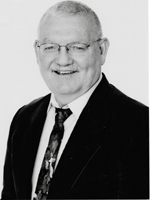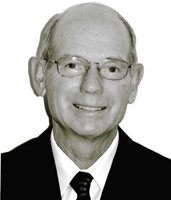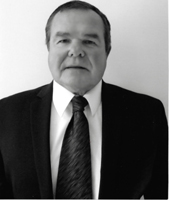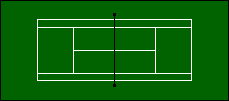 |
||
 |
 |
 |
Jim Powers Okemos |
Tom Pullen A.A. Pioneer |
David Sukup G.R. Forest Hills Northern |
(click on Inductee's name to read 'description')
 |
||
 |
 |
 |
Jim Powers Okemos |
Tom Pullen A.A. Pioneer |
David Sukup G.R. Forest Hills Northern |
(click on Inductee's name to read 'description')

 JimPowers, Okemos High School
JimPowers, Okemos High SchoolA good high school athlete, Jim Powers chose track and baseball in the spring of his 9th and 10th grade years at Mason High School, but he had played lots of summer tennis before that. In the ensuing two years, he played 2S and 1D for Hall of Fame coach Helen Ferle (Class of 1995) before heading off to Alma College for four years of football. At Alma, he also walked on to play tennis at the 4S, 5S, 6S, 2D, and 3D positions. He was fortunate to meet Kalamazoo College’s George Acker, who magnanimously took an interest in someone who played both football and tennis (George was also a wrestling coach). One of his college coaches, Joe Walser, was a religion professor who officiated at his wedding.
These provided great experiences and training, stuff that served him well when Okemos needed a science teacher and football coach. “Tennis was sort of a throw-in to go with that,” he says. “Two of my college coaches had ties to Okemos, one a brother and the other a brother-in-law.”
He didn’t disappoint anyone. From 1973 to 1984, his tennis teams steadily rose in the state rankings. In 1984, the kids came in second behind Cranbrook and were poised to capture a state championship in 1985. Then, amazingly enough, the school became Class A by one student and finished 2nd in 1986 to Redford Catholic Central. In a scrimmage that year, Okemos beat Cranbrook 5-2 (clear implication involved).
The next year, Okemos was back in Class B and this time they triumphed over Cranbrook. After that, the Chiefs remained in Class A until the four divisions kicked in. From 1989 to 1997, the team, under Jim’s leadership, captured five Class A titles (1989, 1992, 1994, 1995, and 1997), then two more (1999 and 2000) in Division 2 after that.
Coaching tennis in a high powered community can be a high stress job filled with elevated expectations but Jim was able to make it both fun and meaningful. Henry Brunnschweiler, current boys and girls varsity coach at Haslett, played tennis for Jim in the 1980s (Jim was also his science teacher). “My junior year of high school, Okemos won the state title but I was only an extra on the team,” he says. “Yet throughout the year, Coach kept me and the many other extra players involved by working us into matches and really challenging us at practices to work hard and compete. He never treated his extras or his starters differently and provided an opportunity for the many extra players to feel like they were part of a special team. His patience and willingness to treat everyone equally was evident when I subbed in an important tournament at the second singles spot. Despite all the matches finishing but mine, he sat by my side and coached me the whole way through the match while the other teams and players were already leaving. He made me feel important because as a sub, I really didn’t make a difference. I remember him fondly for always making myself and others feel important.”
“One of the things that amazed me about Jim was his ability to take great high school players and motivate them to be even better,” says Dave Clutts, varsity coach at St. Clair High School who was an assistant and JV coach for Okemos High School from 1987 to 1990. “I have never seen a team with such a total commitment to achieve a goal. This stemmed from Jim’s leadership. It just seemed like the kids wanted to achieve for him. Even though there was a lot of pressure to win a state title at Okemos, Jim was able to take the pressure off the kids and they responded.”
Both Henry and Dave credit Jim with their life’s work. “I probably would not have ended up a teacher without coaching with Jim at Okemos,” says Dave, a former MHSTeCA Coach of the Year. “I can honestly say that my experience working with Jim and our players at Okemos had the biggest influence on my career choice. Furthermore, much of what I do in coaching has been influenced by Jim. The way I schedule, the way I work with singles and doubles players differently, and how I piece together my lineup has the hand of Jim Powers all over it.”
After retiring in 2002, Jim continued by volunteering his considerable experience and expertise at Holt, where his four kids went to school (three of them played tennis). “Although all of his kids are currently out of high school, he is still involved with the tennis programs and serves as a concessions coordinator for Holt’s athletic boosters,” says Russ Olcheske, varsity tennis coach. “These are big-time commitments, but Jim shows no signs of slowing down. He knows a great deal about tennis, but his greatest asset is his ability to form relationships with the players.”
Jim’s take on all of this is typically self-effacing. Legendary coach Pat Somers of Holt “let me work with the girls,” he says. But everyone in the area knows better. “The kids love having him around and they respect him,” says Russ.
This is one of the most successful coaches in Michigan tennis history, one who was also a pioneer. Jim was an early member of the MHSTeCA board of directors which met in the summers in Prudenville in the early 1980s. Rob Olsen of Mason, another notable name in that era, got him initially interested.
On every level, Jim has been a success: service to the sport, wins and losses, regional championships, and eight state titles. But clearly, his impact has gone far beyond the W’s, extending to meaningful relationships. His portrait takes its rightful place, long overdue, beside his contemporaries in the Hall of Fame.
| Back to Top |
 Tom Pullen , Ann Arbor Pioneer High School
Tom Pullen , Ann Arbor Pioneer High SchoolWith regard to Tom Pullen’s record at Ann Arbor Pioneer, the words amazing, exceptional, or astonishing seem inadequate. Hall of Famer Mark Sobieralski of Grosse Pte. South has described it as insane.
Indeed, when Selection Committee secretary Ed Waits received Tom’s application in the summer of 2013, he played a game with summertime guests. He would hand the application to them with a tongue-in-cheek request: “I don’t know what to do about this,” he would say. “If you were on the committee, how would you vote?” The responses were virtually all the same: “He’s making this stuff up, isn’t he?”
For the past two decades, high school tennis coaches, regardless of Division, know the answer. If you are an Ann Arbor tennis player who wishes to play varsity for Pioneer, your biggest challenge may be making the team, not winning the state title. For instance, during an 8-season run from 2001-2007, Tom’s boys won 145 consecutive contests. This record is comprised of 77 duals, 68 tournaments, 8 regionals, and 8 state titles. From 2001-2007, they won 83 dual matches in a row. They faced 590 teams without a loss. Their only “blemishes” during that period were a tie for the state championship in 2001 and a tie at the league tournament in 2007.
Not to be outdone, Tom’s girls competed in 117 dual meets without a loss during a 12½ year run from 9/21/99 to 5/7/13. Those victories included wins over 2004 and 2006 state championship teams from Ann Arbor Huron. In 22 seasons, the Pioneer girls have been first or second in the state 16 times. In 43 seasons, the Pioneer girls and boys have been first or second in the state 29 times.
Team depth is an accomplishment for any coach but Pioneer has set new records. In doubles, Tom’s boys won 15 out of 16 state flight championships with one 2nd place from 2002 to 2005. These doubles teams won 533 individual matches against seven losses. The 2005 flights went 136 wins against zero losses. In the past six years, the girls’ doubles teams have captured 12 state championship flights; the others were in 3 final matches, and in 8 semifinals before losing. Overall, his kids have won 100 flight state championships (44 girls, 56 boys). He has coached an additional 60 flight finalists, representing a lot of hardware. Over these years, 158 individuals from Pioneer have won state championships. 98 were state runners-up.
Totals: 15 state championships (5 girls, 10 boys) and 14 state runners-up (3 boys, 11 girls). Also, 33 regional titles (18 girls, 15 boys). Given that Pioneer wins so much in so many sports, the school trophy case can accommodate only the 15 state championship trophies in tennis. Tom stores state runners-up and regional trophies on shelves in his basement. He has recycled some of the 194 invitational trophies that Pioneer has won over the years. Some go under his ping pong table.
“A position on the team in either singles or doubles should be obtained on merit alone,” Tom declares in writing. Indeed, Tom has been a vocal opponent of those few coaches who have stacked their lineups. In addition, his position regarding playing USTA during the high school season is: Don’t. “It sends the wrong message to the team,” he says. “During the season, you are supposed to be a team player, not an individual looking out for himself. There have only been four exceptions during my 45 seasons. Only once did a young man miss a team contest. He didn’t ask again.”
It helps to live and work in the Ann Arbor area but Tom doesn’t sit back and inherit players. For years, he has given free lessons year round. He works with between forty and fifty kids per day, Monday through Friday. In the winter, he helps kids after 8:30 p.m. Recently, he and his son bought an old beat-up warehouse, half of which was converted into two tennis courts. “It ain’t pretty, but it works,” he says.
“Brick” (a nickname dubbed by his 5th grade basketball team in 1981 when he woefully demonstrated the proper layup form) wrestled at 138 pounds when a student at Pioneer. “At Michigan, I only wrestled my freshman year, which had to be exhibition since freshmen couldn’t start,” he says. “I had a good chance of starting as a sophomore at 150 pounds. But with the prospect of two-a-day practices, a part time job and a pre-med curriculum, I knew it would be too much. So I gave up wrestling for the team.” Instead, Tom went on to get three degrees from U of M: BA, DDS, and MS in Dentistry. He practiced dentistry for 34 years and was an Assistant Professor at the U of M Dental School where he lectured and taught clinical dentistry for 11 years.
In the midst of this, he took up tennis at the age of 35. “The tremendous effort, discipline, and stress which is a part of wrestling certainly helped mold my character and made me a tougher competitor in life,” he says. Tom’s athleticism and competitiveness resulted in 10 city doubles championships, no small feat in the Ann Arbor community.
Not surprisingly, coaching honors abound: Tom has been our organization’s Regional Coach of the Year 25 times and State Coach of the Year three times (Boys: 1999 and 2006, Girls: 2003). In 2007, he was named National High School Athletic Coaches Association Coach of the Year. In 2000, he was National Federation of High School Coaches Association Coach of the Year for girls.
Tom is arguably the most successful high school tennis coach in history, given that his achievements took place in the flight era and at the Class A/Division 1 level. His records are indeed exceptional, astonishing, amazing, even insane. Our Hall of Fame would be woefully incomplete without him.
| Back to Top |
 David Sukup, Grand Rapids Forest Hills Northern High School
David Sukup, Grand Rapids Forest Hills Northern High School“Coach Sukup has a way of turning good athletes into good tennis players,” said 1S Claire Aleck in the spring of 2013. The Huskies had just overwhelmed the Division 2 regional, eclipsing runner-up East Grand Rapids by 10 points. FHN senior Angel Wang echoed the same sentiment back in May, 2012. “It is Coach Sukup and the Sukup family,” she said of the team’s success. “They put more into it than just coaching. They really put their whole lives and their whole heart into it. It’s not just a sports program here. It’s a program about character, and it helps us develop as family, and what they teach us -- all the lessons that we have learned -- extend beyond the court.”
To say that Dave’s teams have been dominant is an understatement. At the time that Angel played 2S for the Huskies, the girls team had won the previous six state titles and seven of the previous nine. Before that, they were state runners-up in 1999, 2001, and 2012. From 1999 to 2010, they lost only two dual meets. Under Dave, they have never lost a regional.
Not to be outdone, the boys under Dave have also been very strong. State titles were captured in 1995 and 1998. The Huskies came in second once (1994) and third four times (2001, 2002, 2010, and 2013).
If regional trophies are displayed in the school’s showcase, it had better be a large one. Dave’s girls have brought home 14 of them; so have the boys. This is especially impressive in that their regional often, if not always, includes perennial powers East Grand Rapids and Forest Hills Central.
Over 46 seasons, Dave has coached 107 individual all state players. These kids have won 184 Saturday tournaments (more hardware for the showcase). They have captured 39 OK Conference championships. Thirty-eight of his teams have been ranked in the top ten. His total dual meet record is 446-29-16. His girls record is particularly astonishing: 144-3-3, a 96% win percentage. Boys: 302-26-13, an 89% win percentage.
But Dave doesn’t simply sit by and collect trophies. Often enough, he awards them to himself. That’s because over the years he has managed the regional four times, directed the conference tournament 25 times, and hosted a Saturday invitational 54 times. In addition, he has served on the state seed committee 10 times (six for girls, four for boys), an arduous task. He was voted Regional Coach of the Year 18 times and was our State Coach of the Year for girls in 2006.
Why so much success? Part of the reason is experience. Dave had coached varsity football for 24 years, 14 as a head coach (he was voted football coach of the year in 1996). He started the school’s swim team and was the head varsity coach for seven years. He also coached JV baseball for seven years. He has spent 24 years directing summer camps and 39 years giving private tennis lessons.
In other words, Dave has spent a career of practicing and perfecting how to get kids to win in a multitude of sports. With regard to tennis, he can teach strategy, especially to doubles players where there is arguably more to impart. In 2003, for instance, all four of his doubles teams made it to the state finals. He has seen his kids play for the state championship in every singles flight except 1S.
“Even his fourth doubles come in,” marvels Erin Fouty, former coach at NorthPointe Christian. Erin cites a drill in practice in which, if the ball bounces on your side of the net after the serve and return, you automatically lose the point. “I instruct my players to get to the net without letting the ball hit the ground,” Dave says. “This forces them to move forward, get to the net, and hit the ball in the air. This keeps them moving forward at all times. I also have a key phrase I use often when coaching: SRV meaning Serve, Return, Volley.
A three-sport athlete at Grand Rapids Union (basketball, baseball, and 2nd team all state in football), Dave started playing tennis as part of an activity class in college, then joined East Hills in Grand Rapids in 1973 where he competed in singles and doubles tournaments for ten years. In the midst of teaching and coaching multiple sports, he developed and improved the FHN courts four times. He retired from teaching physical education and health at the school after 36 years.
Dave benefited from the help of his children, the family that Angel Wang alluded to. John has assisted him with both teams and coached the JV sqauds. Laura has helped with the girls. John was on the 1995 state championship team as a senior. Laura won the state championship at 1D as a senior in 1999. They both assist with the summer program which hosts over 300 campers each summer. Together, they supply both tradition and consistency.
In May 2010, the Sukup Tennis Pavilion was dedicated, a bit of immortality. A Hall of Fame plaque supplies a bit more.
| Back to Top |